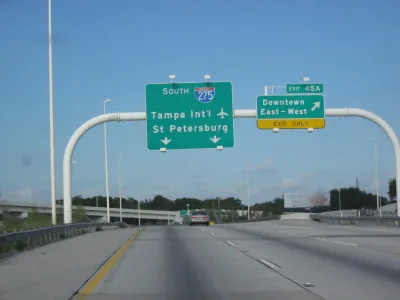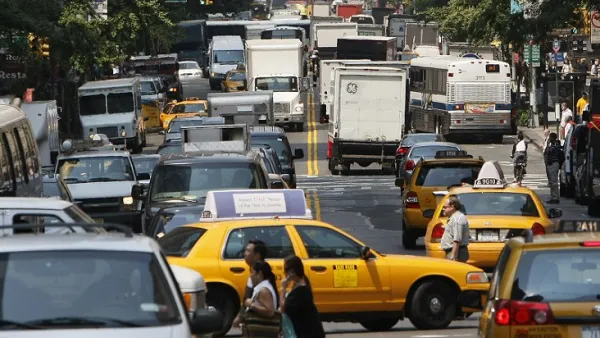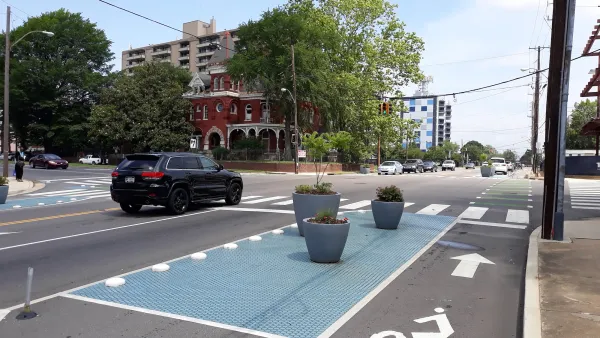Florida would seem to be the ideal place for walking and biking. It's flat as can be. But the state developed very much with the car in mind. Billy Hattaway, at the Florida Dept. of Transportation, wants to change that.

Since 2011, Billy Hattaway has been on a mission to make Florida convenient and—especially—safe for cyclists and pedestrians. It's no easy task. The state's roads are among the deadliest in the nation for people who aren't protected by two tons of steel. Streetsblog interviewed Hattaway about the progress he has made as the Florida Deptartment of Transportation's lead bike-ped official.
The problem with Florida's roads is rooted in the state's development patterns, according to Hattaway:
"From the mid-’60s on there was nothing but sprawl development. That was the result of things that the Federal Housing Administration put into place. There’s a lot of things that contributed to that. Certainly the focus on moving cars was a part of that. Everyone wanted the American dream. It’s a hard ship to turn. All the retail followed that pattern. Now we have these big box stores."
He says that he is approaching the challenge on two fronts: culture and design. Culture is coming along, but design will require extensive rebuilding:
"We have to equip our engineers with a different set of tools to do design. We had sort of a one-size-fits-all approach to street design, whether it was rural or urban. For example, we used 12-foot lanes everywhere In Florida DOT, we are changing our standards. If you’re a state route going through an urban area, the standard lane width will be 10 feet. We’re in the process of changing the standard. We’ve already adopted the 11-foot lane standard and we’ll be putting in the 10-foot lane here shortly. We’re using what I call context, volume, and speed. All three things need to be looked at, and context will have a much bigger role than it’s had in the past. We’ve treated context now as if it were landscaping — making the area pretty."
FULL STORY: Meet the Man on a Mission to Make Florida Walkable and Bikeable

Analysis: Cybertruck Fatality Rate Far Exceeds That of Ford Pinto
The Tesla Cybertruck was recalled seven times last year.

National Parks Layoffs Will Cause Communities to Lose Billions
Thousands of essential park workers were laid off this week, just before the busy spring break season.

Retro-silient?: America’s First “Eco-burb,” The Woodlands Turns 50
A master-planned community north of Houston offers lessons on green infrastructure and resilient design, but falls short of its founder’s lofty affordability and walkability goals.

Test News Post 1
This is a summary

Analysis: Cybertruck Fatality Rate Far Exceeds That of Ford Pinto
The Tesla Cybertruck was recalled seven times last year.

Test News Headline 46
Test for the image on the front page.
Urban Design for Planners 1: Software Tools
This six-course series explores essential urban design concepts using open source software and equips planners with the tools they need to participate fully in the urban design process.
Planning for Universal Design
Learn the tools for implementing Universal Design in planning regulations.
EMC Planning Group, Inc.
Planetizen
Planetizen
Mpact (formerly Rail~Volution)
Great Falls Development Authority, Inc.
HUDs Office of Policy Development and Research
NYU Wagner Graduate School of Public Service




























